The man rescuing Britain's 'magical' glow worms
- Published
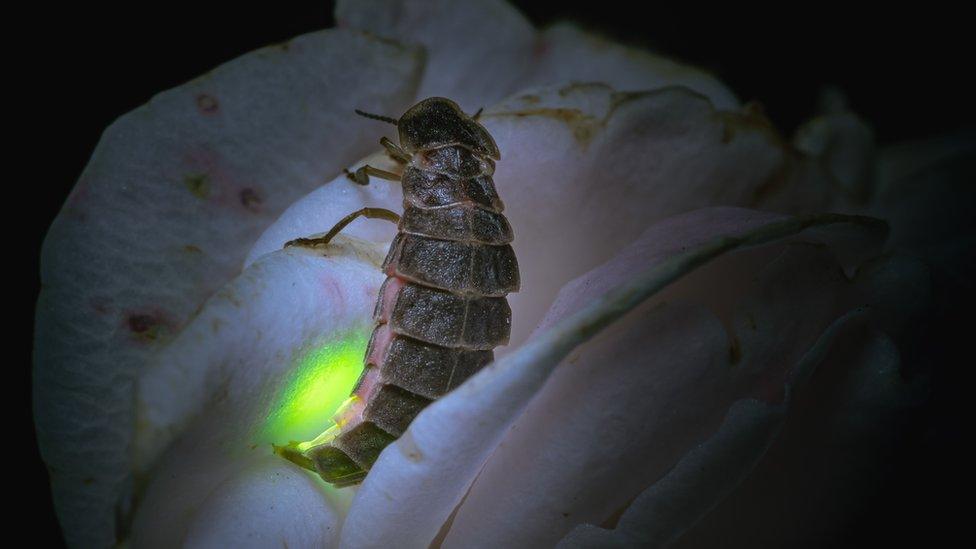
The female beetles give off an eerie glow in summer
"The fascination of glow worms for me is that they are in effect magic," says ecologist Pete Cooper, as he tramples through thistles and nettles.
"The glow worm has been the symbol of the other world, of love, of hope, of rebirth, of simply the great mysteries of nature."
The insect is declining in many parts of the UK due to a host of factors, from habitat loss to light pollution. Experts believe artificial lighting is distracting the males so they miss out on a chance to mate.
The young conservationist has a passion for glow worms that's second to none. He has gone to extreme lengths to breed and release them in the south of England, such as here in Hampshire.
He stops by a pile of rotting logs and opens the Tupperware tub he's clutching to his chest.
Inside, not the takeaway it once contained, but a scattering of dirt. Peering closer, I spy a tiny centipede-like insect waving a limb, one of Pete's precious cargo of baby glow worms.
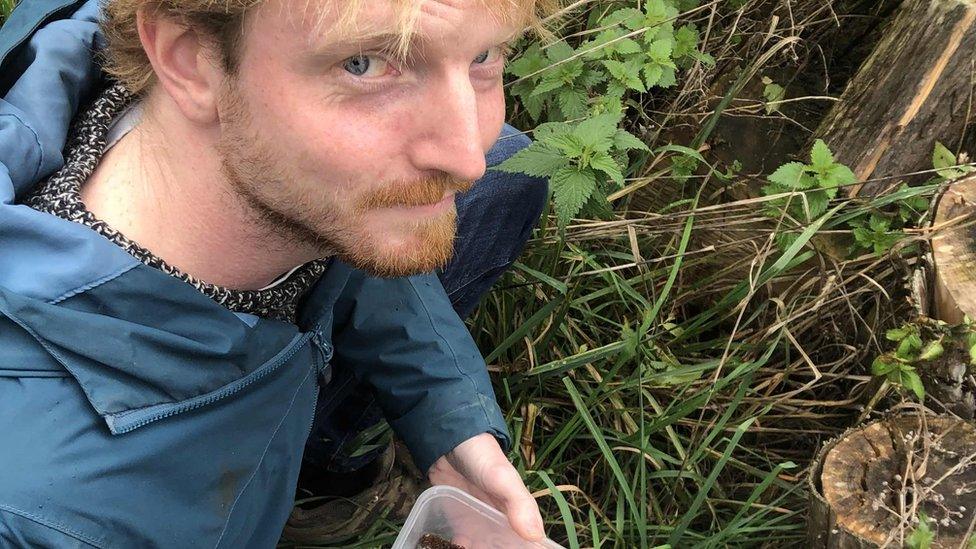
Pete Cooper is spearheading efforts to reintroduce the glow worm in Britain
"These larvae were hatched this summer, so they are very young and they are only about the size of a grain of rice," says the protégée of reintroduction pioneer, Derek Gow, known for his work with beavers, white storks and water voles.
"I'm not holding the twinkling box of lights," he adds, referring to the eerie greenish-orange glow made by the female of the species; the stuff of fairy tales and folklore.
In fact, glow worms aren't worms at all, but beetles. The males are fully-winged as adults and can fly, while the females are wingless and have to glow frantically in the summer months to attract a passing mate.
"The male comes in because it's attracted to the site of the glow and it goes, 'Wow shiny,'" says Pete, who is passionate about nature. He's been a zoologist "since I could walk" and his first words were trees, bracken and gorse.
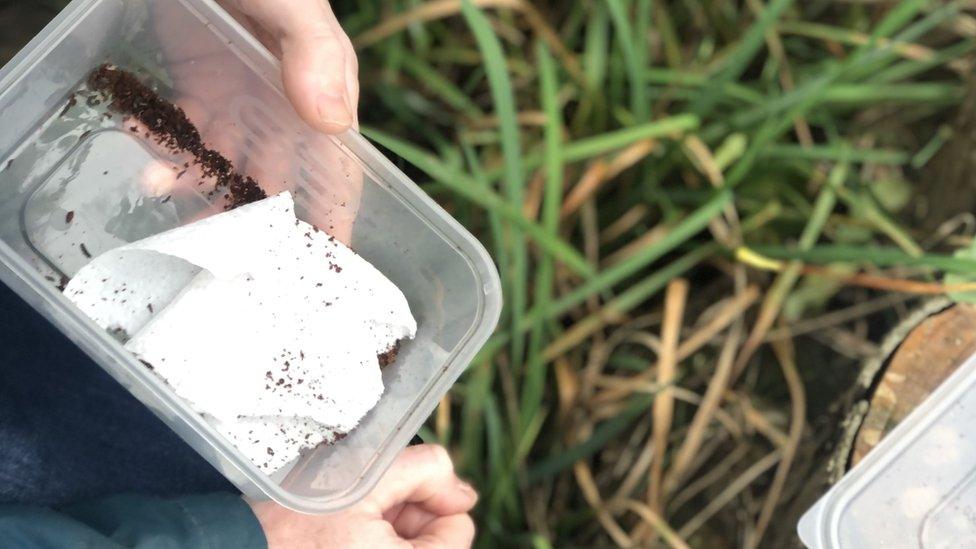
At this stage the insects are the size of a grain of rice
After studying zoology, he worked as a professional ecologist for seven years, turning to breeding glow worms in his Bristol flat during the first lockdown in 2020. While many of us were baking banana bread, Pete took up the "impossible" challenge.
"It was quite a cathartic moment of hope in that horrible Covid year of collecting these lights in the dark," he explains. "But poetry aside, when we started, actually, it wasn't very poetic; it was a bit of a disaster."
At first he lost a lot of animals. He turned to citizen scientists for help, including a hobbyist who has bred 21 generations of glow worms over 14 years at his home in Germany.
He soon perfected and scaled up his techniques and has now begun releasing glow worms at various sites.
I've joined him in the grounds of the historic Elvetham Hotel near Fleet, where he's helping to create a refuge for the insects in wild areas at the edge of manicured green lawns.
More than a thousand glow worm larvae have been released over two years in this "living laboratory" and this summer he had the first encouraging signs with the discovery of one glowing female.
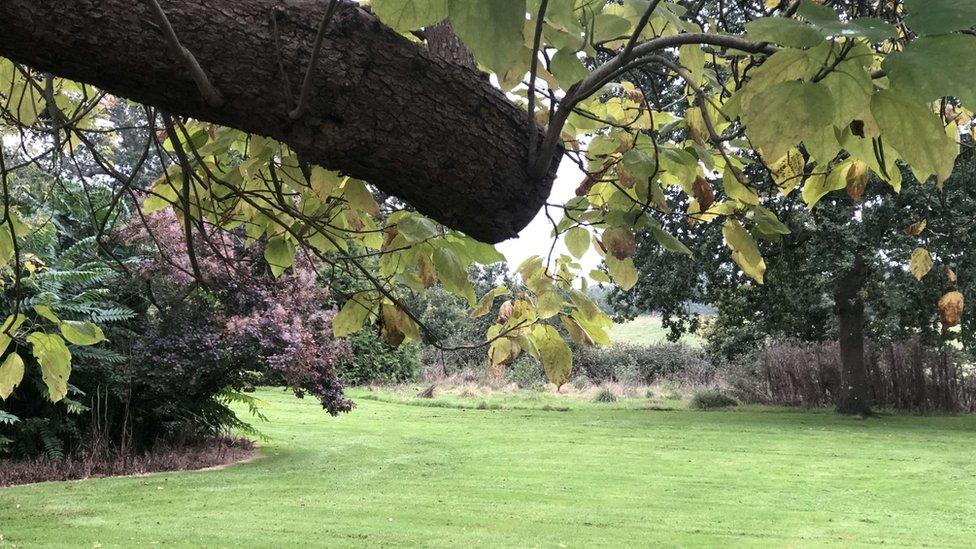
Edges of lawns left to grow wild are good habitat for glow worms
"It's a long way to go before I would describe this release project as being successful," Pete explains. "But that's the thing about conservation; it is a long game."
Newly hatched glow worms need natural grassy habitat with plenty of snails to dine upon.
In a scenario out of a horror movie, the young insects crawl onto the animal's shell and inject a paralysing toxin that slowly turns the snail's insides into soup, which they then suck dry.
This horror aside, not everyone's chuffed with the idea of reintroducing glow worms - and many other animals - into the wild.
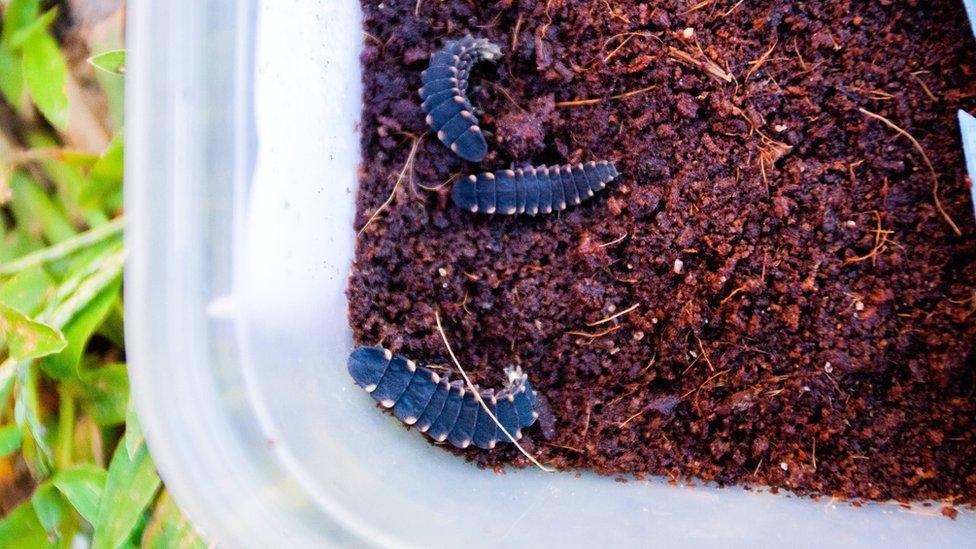
Young glow worms bred at Wildwood in Devon
This week, the government said the likes of beavers and storks being released was a low priority, to a herald of criticism by wildlife groups.
Alistair Driver, director of Rewilding Britain, sees this attitude as short-sighted. Over the phone from Broughton Sanctuary in North Yorkshire, where he's advising on a project to bring wildlife back into the landscape, he says there are already clear international guidelines set by the International Union for the Conservation of Nature.
"What we're doing wrong in this country is being ridiculously over-bureaucratic about perfectly sensible, logical reintroductions following those guidelines," he says.
"Successive governments have been burying their heads in the sand on this, basically listening to a small vociferous minority who don't want to see reintroduction of things like pine martens and beavers."

Reintroducing species such as the beaver has raised controversy
Pete too has faced opposition over his glow worm project. But he points out that even the reintroduction of the red kite was once seen as controversial.
And he frowns over so-called rogue reintroductions, where rare or extinct butterflies appear in random places by cover of night with little chance of survival.
"I think it is very important we do these things well and with the best knowledge possible but you've also got to be bold and pragmatic," he says.
His work has garnered interest from other organisations seeking to do large-scale glow worm releases, including Wildwood in Devon and the Manchester Museum.
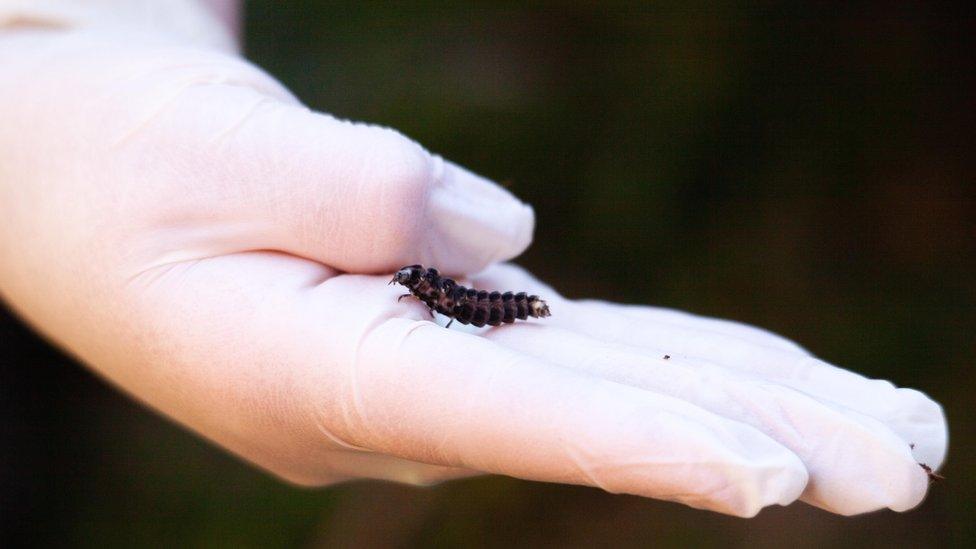
The newly-hatched insects are tiny
They are now developing their own glow worm "zoo" based on his breeding techniques using a local population.
"Once upon a time there were children that would go into fields behind their houses or they'd be exploring down by rivers or in woodlands and they would come across these fascinating little creatures," says Charly Mead, Education and Conservation Manager at Wildwood Devon.
"Unfortunately, that doesn't happen very often now. We do a lot of education here at Wildwood and most of the children wouldn't know what a glow worm was so hopefully we can help improve those populations."
Back in Hampshire, it's time to say goodbye to the little critters. Pete parts the grass then gently tips his charges on to the ground.
"Those glow worms are now officially wild animals," he announces, solemnly, snapping the lid back on the box. He hopes his work can be a symbol of hope in a time of biodiversity loss.
"This one little glow worm, this little light in the dark, can help be that catalyst for a much bigger change for nature," he says.
Follow Helen on X, formerly Twitter @hbriggs.